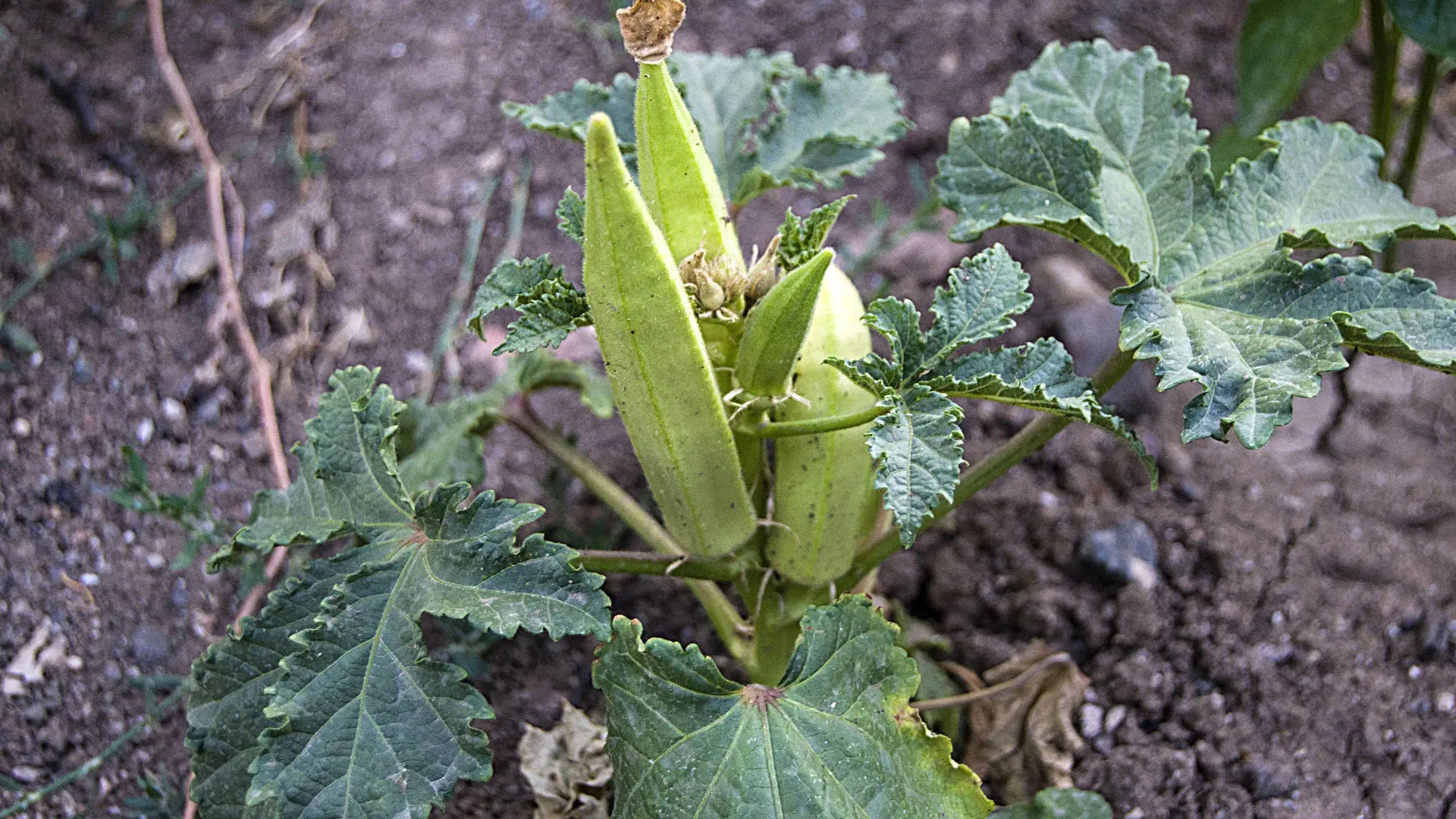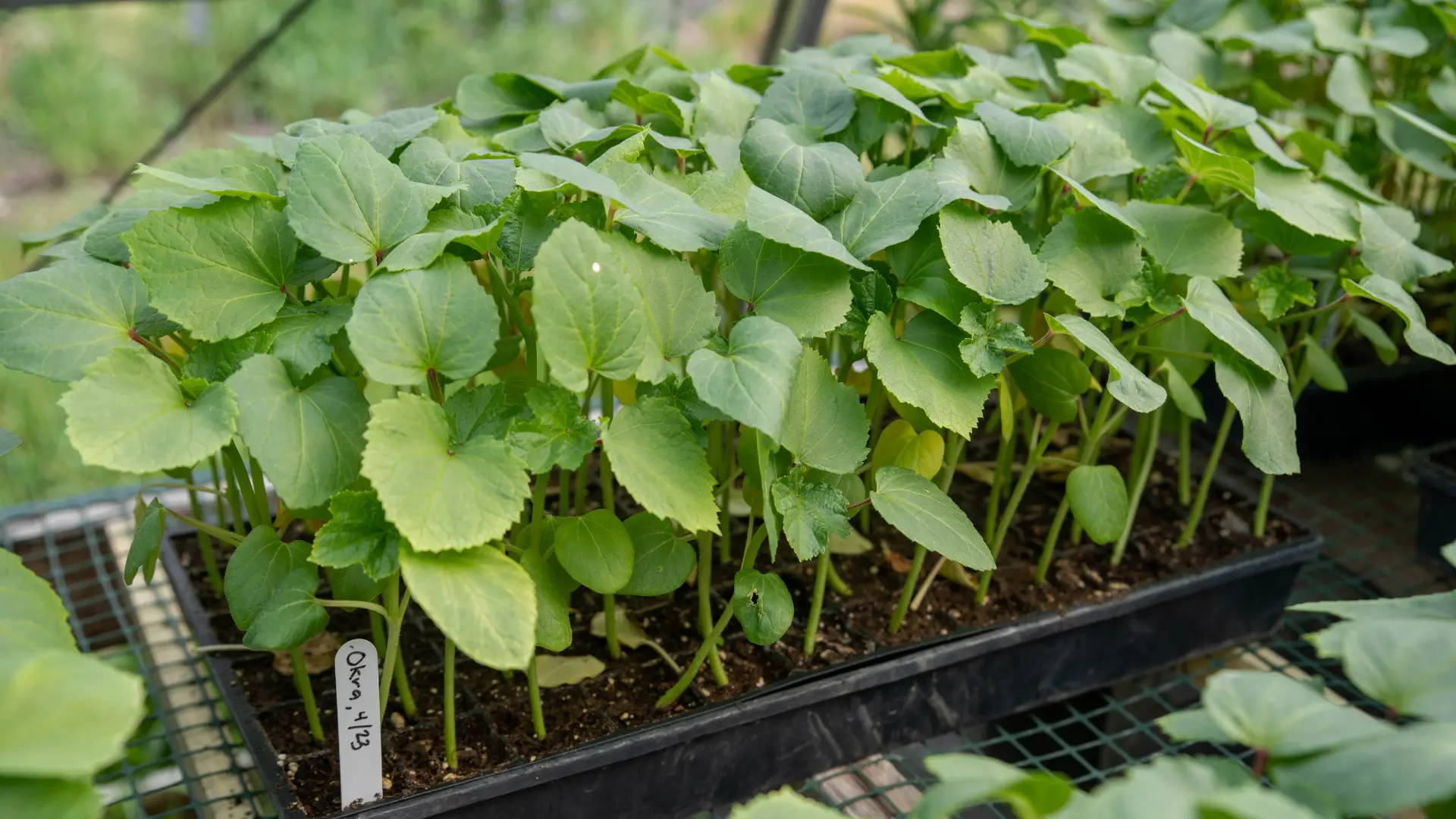I do not particularly like Okras. Unlike my tomatoes which I often use in my meals, Okras are rare in my kitchen. However, even though I’m not too fond of Okras, I plant them from time to time which has helped me gain knowledge about how they are spaced and grown.
You can either plant Okras to grow sprouts, or you can plant them to harvest the pods. Whichever purpose you choose for growing your Okras, each purpose has its unique spacing. If you plant them to harvest the sprouts, Okras can be planted close together. If Okras are planted to harvest pods, they must be spaced further apart.
All About Okra Plant Spacing

Because of the hard shell that Okras come with, you need to ensure that you moisten the seeds so they can germinate. You can let the seeds sit in a jar of water for 12-18 hours to soften them. Alternatively, you can place them between paper towels overnight to soften them.
Keep the soil damp but not muddy after planting the seeds, and place the container in a warm, sunny area under a cool, fluorescent light. Once the sprouts appear, you can pick, clean, and use them while planting fresh seeds for the subsequent batch.
If you want to plant your Okra in a garden, it is also important that you know how to space them. When you plant your Okra in your garden, you should initially plant them 0.5 to 1 inch deep. The rows should be 2 to 3 feet apart from other rows, and the seeds should be 3 inches apart. If your soil is clay and you live in a windy area, the seeds should be planted much deeper( one or two inches deep).
Just like in Broccoli spacing, thinning must be done when planting your Okra. When your Okras grow to 2 or 3 inches tall, you can thin the plants by selecting only the strongest. Again, avoid the urge to pull out the weaker plants; instead, use a knife to cut them off gently. If you tug on the plants, you may disturb the root system of the healthy ones. Thinning is the best way to ensure that you only have the healthiest plants in your garden because not all Okra seeds you plant will be viable.
If you wish to keep the seeds from different varieties of Okra that you cultivate and use them later, this poses another spacing issue in your garden. To avoid cross-pollination, the several okra cultivars in this situation should be planted 500–1600 feet apart.
You will collect the sprouts soon after the first leaves or cotyledons form if you use any vegetable to grow sprouts. So you can place your plants closely together to generate a lot of sprouts. As long as you plant the seeds 1/2 inch deep, you can grow sprouts in a shallow container because you’ll harvest them before they form an extended taproot.
Spacing Okra Seedlings
Still, on the issue of Okra spacing, let us talk about how to space Okra seedlings. Because of the fragile taproots of Okras, it isn’t recommended that you transplant them. However, if you live in an area with a cool climate, you may realize that it is easier to grow Okra indoors and transplant it outdoors, which helps shorten the harvest time.

In numerous peat moss pots filled with potting soil for vegetables, sow two seeds each to grow seedlings. Add a half inch of dirt on top of the seeds. Thin off the weaker plant when it reaches 2 to 3 inches in height. The seedlings should be watered well an hour before transplantation, and the pot should be removed, or the sides should be cut. The seedlings should then be planted 18 to 24 inches apart in rows spaced 2 to 3 feet apart at a depth of 1.5 inches.
Spacing Okras in Containers
If you lack space in your garden, you may plant your Okra in a container. I also plant my pepper in pots when I lack space in my garden.
Take note that the container you should use has to be about 12 to 14 inches deep. The depth of the container is important because it will allow the taproot of the Okra to go deep. The container should also be large enough to allow 18 to 24 inches of spacing between each Okra Plant.
Plant the seeds 1/2 inch deep and 3 inches apart. When the plants are between 2 and 3 inches tall, thin them to 18 to 24 inches apart, removing all except the strongest ones.
Spacing Okras in Raised Beds

Okras are very versatile plants, making them great options for raised bed planting. When planting your Okra on a raised bed, you must be careful with the taproot. Refrain from planting your Okra on a raised with an impermeable bottom, such as a new layer of cardboard. Ensure that the raised bed has enough room for your Okra taproot to go deep. Keep in mind that the taproot of Okras can go as deep as 2 or 3 feet.
Okra seeds should be sown when the daytime temperature is around 85°F, and the nighttime temperature is around 60°F. Okra seeds should be sown 12 to 1 inch deep, with 12 to 18 inches between each row of seeds. Okra plants are tall (mine easily grow to seven feet); thus, there should be 3 to 4 feet between each row. Also, always rake the soil over the seeds.
If you are planting your Okra on a raised bed, there are a few things you should be aware of, such as finding the best location. Air, sunlight, water, and soil are factors that can either cause your Okra to grow well or not.
Choose the optimal placement for your raised bed to receive enough sunlight for your okra plants. Okra enjoys the full sun because it is a summer crop. The best soil for growing Okra is well-drained soil with all the organic nutrients. Okra has an adaptable nature and can adapt to most types of soil.
You can put some add-ons in the form of compost or fertilizer to your soil to boost its fertility and make it rich in organic components. Okra consumes a lot of food and requires a lot of nitrogen. Also, your Okra should be grown in acidic soil.
Similar to when planting Okras in-ground gardens, Okras should be soaked before they are planted on raised beds. You can soak your Okras in water or even milk, and soaking will help break down the seed coating and allow your Okra to germinate faster.
